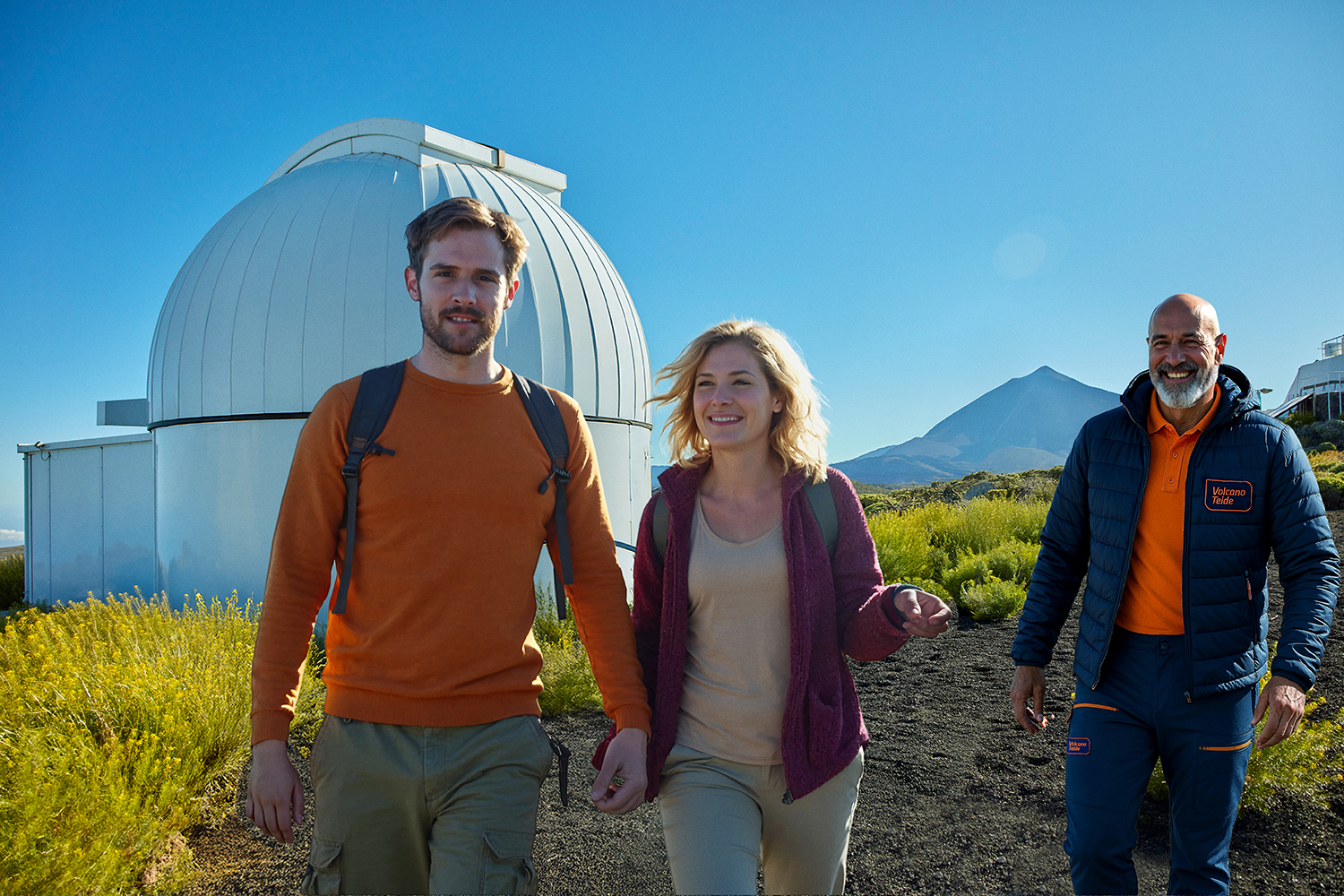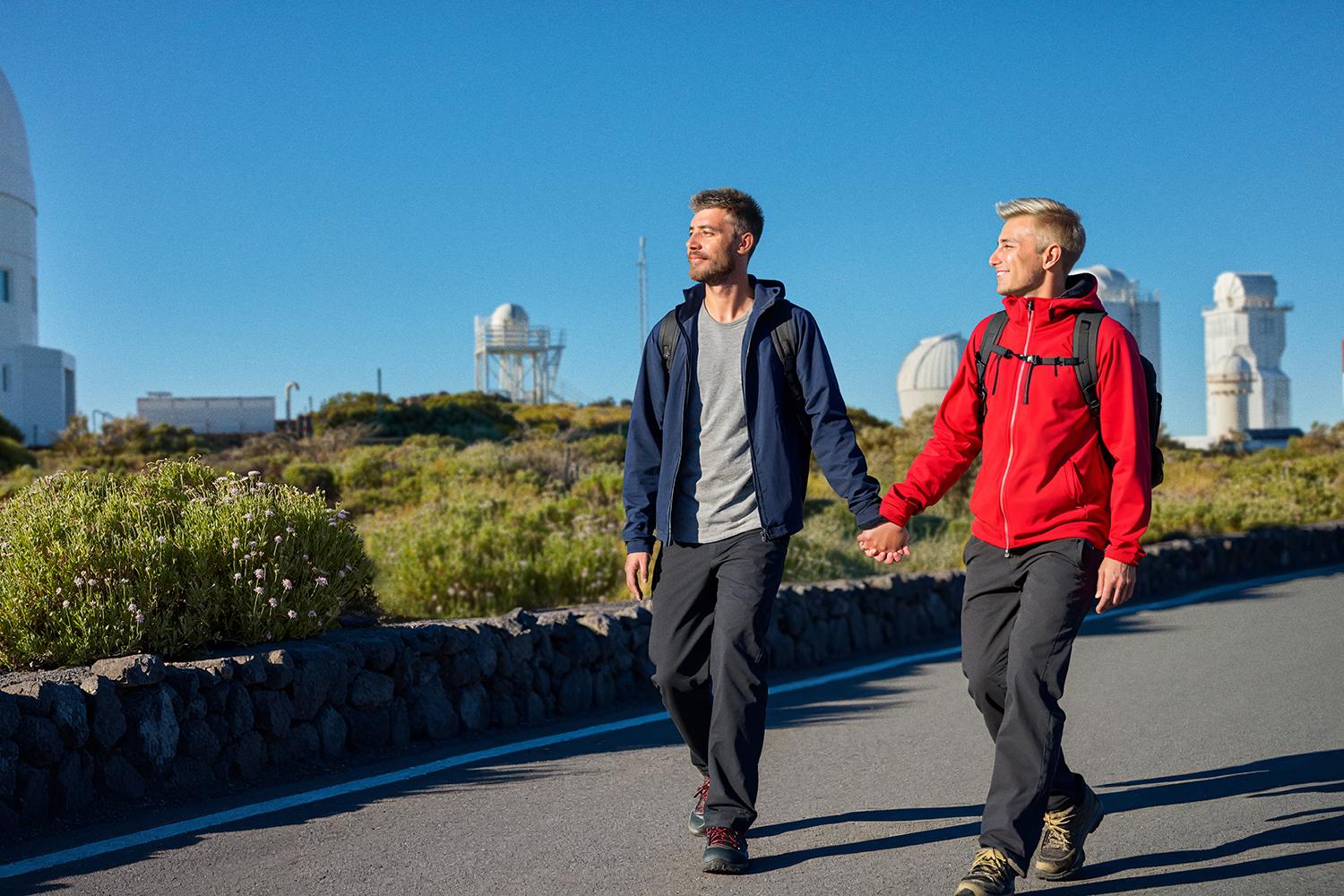Teide Observatory

In 1964, the first telescope began to operate at the Teide Observatory, whose scientific activity presently focuses on solar observations and robotic astronomy, marking the beginning of astrophysics in the Canary Islands.
The Canary Islands are one of the three best spots in the world to observe the sky, along with Chile and Hawaii. If we add to this characteristic the geographical situation of the world’s largest solar observatory, located at an altitude of 2,390 m, the result is that the Teide Observatory concentrates the best European solar telescopes.
Interesting facts about the Teide Observatory
Managed by the Canary Islands Institute of Astrophysics, an institution which contributes to science with an average of one scientific publication daily, at the Teide Observatory it was discovered that the Sun has its own frequency and that it beats, like a heart, every five minutes.
In 1995, the IAC-80 telescope at the Teide Observatory was the first in the world to discover the first brown dwarf, named Teide-1.
It is possible to visit the facilities of the world’s largest solar observatory during guided visits of the Teide Observatory available several days a week.
The main telescopes at the Teide Observatory
Extending over an area of 50 hectares, the Teide Observatory houses solar and nocturnal telescopes owned by more than 60 institutions from 19 countries.
IAC-80 telescope at the Teide Observatory
Installed in 1991, the IAC-80 telescope at the Teide Observatory is the first telescope of this class designed and built in Spain.
Numerous astronomical observations of great importance have been made at the Teide Observatory with this telescope, such as, for instance, the discovery of the Teide-1; the first brown dwarf ever known.
TCS telescope at the Teide Observatory
Installed in 1972, the TCS telescope at the Teide Observatory is one of the most highly performing telescopes in the world dedicated to night observations in the infrared range.
This telescope at the Teide Observatory has been named after Carlos Sánchez, Professor of Astrophysics at the University of La Laguna and a tireless promoter of infrared astronomy.
Solar laboratory at the Teide Observatory
The solar laboratory at the Teide Observatory is comprised of six instruments and works non-stop conducting daytime observations.
The solar laboratory of the Teide Observatory, as its name suggests, is dedicated to the study of the solar interior.

SONG telescope at the Teide Observatory
SONG telescope is a nocturnal telescope at the Teide Observatory with a diameter of 1 m, which belongs to the SONG project, dedicated to the design and construction of a global network of small telescopes for the study of stars and planetary systems around the stars.
GREGOR solar telescope at the Teide Observatory
This solar telescope at the Teide Observatory is the largest solar telescope in Europe with an aperture of 1.5 m.
GREGOR solar telescope at the Teide Observatory is designed to measure, with high precision, the magnetic field and the gas motions in the solar photosphere and chromosphere, and to perform high resolution stellar spectroscopy.

VTT telescope at the Teide Observatory
This telescope, belonging to four German institutions, was installed at the Teide Observatory in 1986, though it began operational in 1988.
Since then, the VTT (Vacuum Tower Telescope) at the Teide Observatory conducts scientific observations from mid April to mid December, with a performance of approximately 40 observation campaigns.
THEMIS solar telescope at the Teide Observatory
This solar telescope at the Teide Observatory is the world's third largest telescope, with a 90 cm useful aperture.
The acronym THEMIS stands for Heliographic Telescope for the Study of Magnetism and Solar Instabilities.

QUIJOTE telescopes at the Teide Observatory
In 2015, the King of Spain, Felipe VI, inaugurated the QUIJOTE telescopes at the Teide Observatory, dedicated to the characterisation, on the one hand, of the polarization of the emission of the Milky Way and, on the other hand, the polarization of the microwave background with the aim of detecting traces of the birth of the Universe.
Guided visits of the Teide Observatory
Did you know that the Teide Observatory is divided into three areas?
The largest solar observatory in the world has one area dedicated to nocturnal telescopes, a second area dedicated to microwave telescopes and a third area dedicated to solar telescopes.
Our astronomical guides will help you discover the wonderful world of astronomical observations on a guided visit of the world’s largest solar observatory during which you will learn in more detail about the different telescopes at the Teide Observatory and how they work.
During the guided visit of the Teide Observatory, you will also have the opportunity to view the Sun through two telescopes with different filters so that you can observe the solar photosphere, looking for details such as the sunspots, and the solar chromosphere, in order to delight the eye with solar prominences or “flares”.
Our guides will not let you leave the Teide Observatory without having enjoyed first, in the science dome, a talk on the electromagnetic spectrum, with a time-lapse video, recorded at the two observatories of the Canary Islands, which shows the night-time activity of both the Teide Observatory and the Roque de los Muchachos Observatory in La Palma and the accelerated motion of the starry sky.
During your visit to Tenerife, do not miss the opportunity to embark on an astronomical journey into the bowels of the world’s largest solar observatory: the Teide Observatory.


